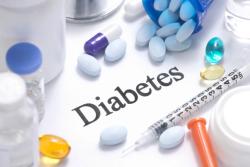
OR WAIT null SECS
Vehicle Exhaust Linked to Increased Risk of Stroke
A new study of cohorts in Sweden found exposure to black carbon from traffic exhaust was linked to an increased risk of stroke incidence later in life.
Results of a new study are revealing more about the impact of exhaust from gas and diesel engines on a person’s future risk of stroke.
The study, which was carried out by a team of investigators from the Karolinska Institutet in Sweden, has established a link between long-term exposure to particulate matter (PM) from black carbon as a result from traffic exhaust and an increased risk of stroke, even in residential areas.
"This study identifies local traffic exhaust as a risk factor for stroke, a common disease with great human suffering, high mortality and significant costs to society," said lead investigator Petter Ljungman, MD researcher at the Institute of Environmental Medicine at Karolinska Institutet. ”We see that these emissions have consequences even in low-pollution environments like Swedish cities."
The Swedish Environmental Protection Agency- and Swedish Clean Air and Climate Research Program-funded study sought to identify potential associations between PM 10, PM 2.5, black carbon, and their sources with incident ischemic heart diseased stroke through an analysis of patients from 3 Swedish cities. The study period ranged from 1990 to 2011 and included 114,758 individuals.
In regard to the population, investigators noted the study included 2 cohorts from Gotehnburg, 4 pooled cohorts from Stockholm, and 1 cohort from Umeå. Additionally, cohorts were chosen for inclusion based on study designs and the incorporation of data collection for cardiovascular risk factors at recruitment.
To assess impact of the varying forms of air pollution, source contributions of PM 10, PM 2.5, and black carbon from sources including road wear, traffic exhaust, and residential heating were calculated for all 3 cities based on emission databased, monitoring data, and high-resolution dispersion models. Time windows of exposure were constructed to assess same-year, 1 to 5 years, and 6 to 10 year averages preceding incidence—risk estimates were based on random effects meta-analyses of cohort-specific Cox proportion hazard models.
Among the 114,758 individuals included in the study, investigators observed 5116 occurrences of incident ischemic heart disease and 3119 incident stroke. Investigators noted that, overall, there were consistent associations noted between different air pollution types and incident ischemic heart disease and stroke incidence.
Analyses revealed for every 0.3 μg/m3 of black carbon from traffic exhaust, a person’s risk of stroke increased by 4%. Investigators noted similar observations were not seen for black carbon from sources including residential heating or for PM 10 or PM 2.5. 

"Black carbon from traffic exhaust could be an important measure to consider when assessing air quality and health consequences," Ljungman noted.
This study, titled "Long-Term Exposure to Particulate Air Pollution, Black Carbon, and Their Source 1 2 Components in Relation to Ischemic Heart Disease and Stroke," was published online in Environmental Health Perspectives.


